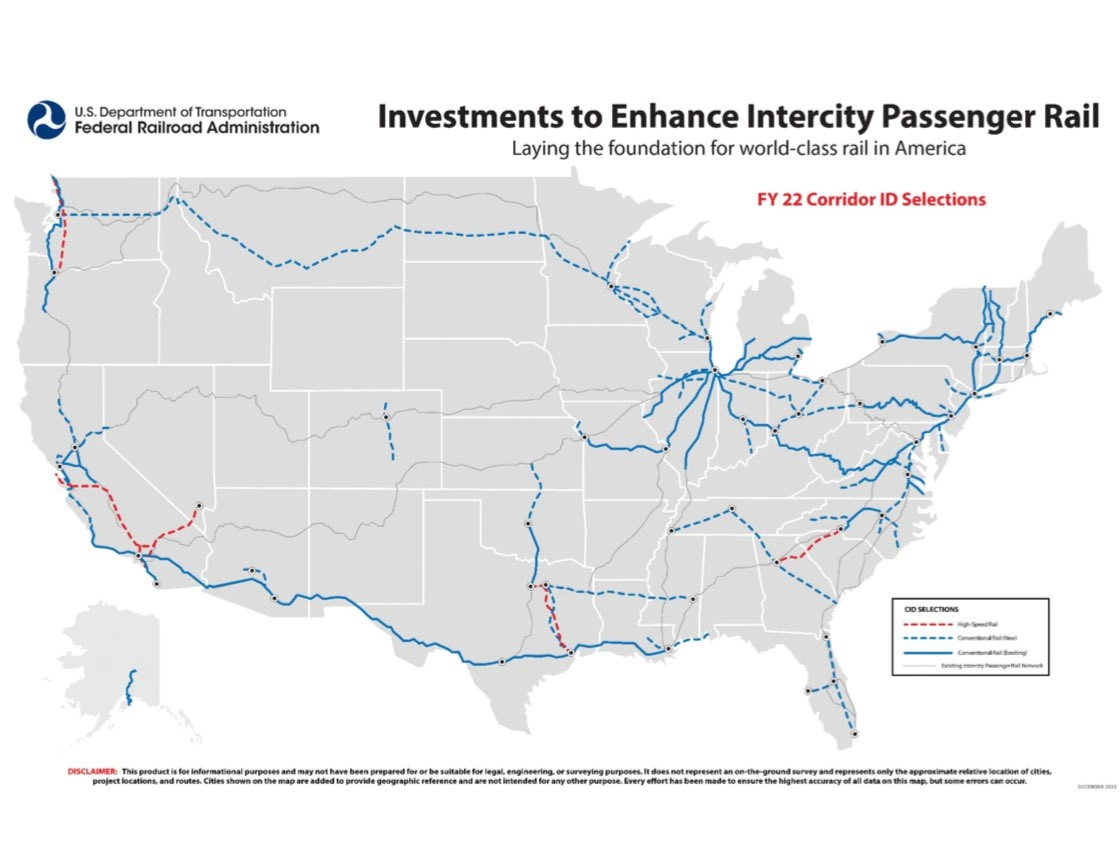In the early 20th century, the United States possessed the world’s most advanced network of intercity rail. Decades of disinvestment and subsidy of other means of transportation left vast swaths of the country with inadequate rail-transportation options. But, in a welcome turn, the Biden administration has recently committed nearly $25 billion to the revitalization of intercity rail in two rounds of funding.

Ten passenger rail projects in nine states are set to receive the federal funding. Image courtesy Federal Railroad Administration
The U.S. Department of Transportation (U.S. DOT) announced the first batch of funding, $16.4 billion, on November 6, provided through the Federal Railroad Administration’s Federal-State Partnership for the Intercity Passenger Rail program. It is directed toward several Amtrak Northeast Corridor improvements. Big-ticket items include the $4.7 billion replacement of the 150-year-old Frederick Douglass Tunnel, in Baltimore, which is currently plagued by water ingress and a sinking floor, among other structural issues, with two high-capacity tunnel tubes and related infrastructure; the $2.1 billion replacement of the Susquehanna River Rail Bridge, also in Maryland; the long-awaited Penn Station Access project, with $1.6 billion earmarked for the improvement of the Amtrak-operated Hell Gate Bridge to accommodate Metro-North Railroad commuter traffic; just over $800 million for the replacement of the century-old and blighted Connecticut River Bridge, which spans from Old Saybrook to Old Lyme; and, last, a further $4 billion—the project has already received nearly $3 billion—in funding for the Hudson Tunnel Project, which will see the boring of two new passenger-rail tunnels between New York and New Jersey under the Hudson River.
On December 8, the U.S. DOT announced $8.2 billion in funding for the Federal State Partnership for Intercity Passenger Rail program, which includes 10 projects across nine states and 69 corridors for potential financing through future grant rounds. In the western United States, the program will see funding for high-speed rail in California’s Central Valley, and between Las Vegas and Southern California. Amtrak’s existing operations on the Eastern Seaboard will be substantially upgraded to improve connectivity. The Pennsylvania Keystone Corridor, running from Philadelphia to Pittsburgh, will undergo expansion and have more frequent trains. The Piedmont Corridor of North Carolina will be fastened to the Capitol Region through a new high-speed-rail route. Chicago Union Station will be renovated to accommodate planned rail improvements in the region. Maine, Montana, and Alaska will also see an increase in service.



Post a comment to this article
Report Abusive Comment